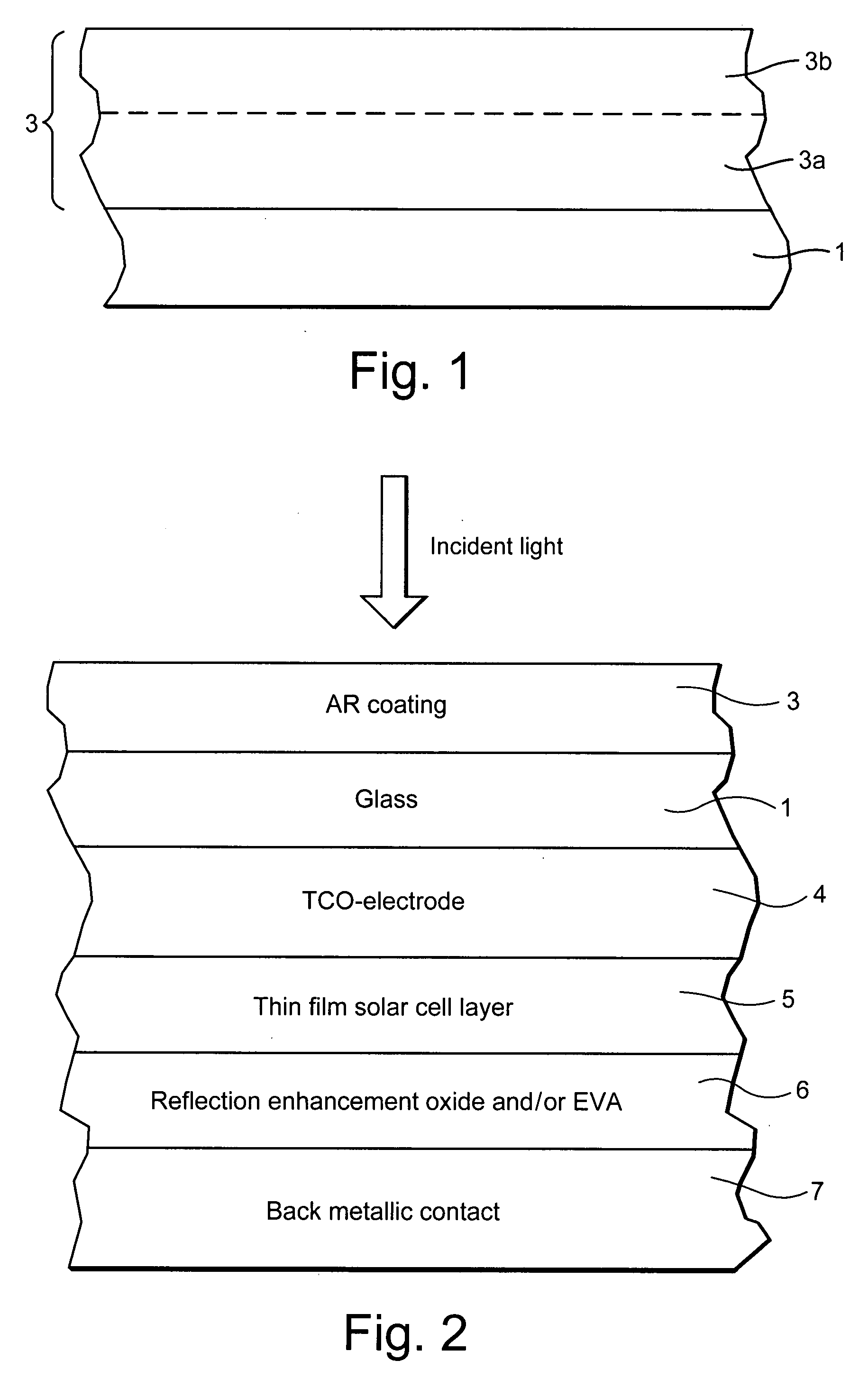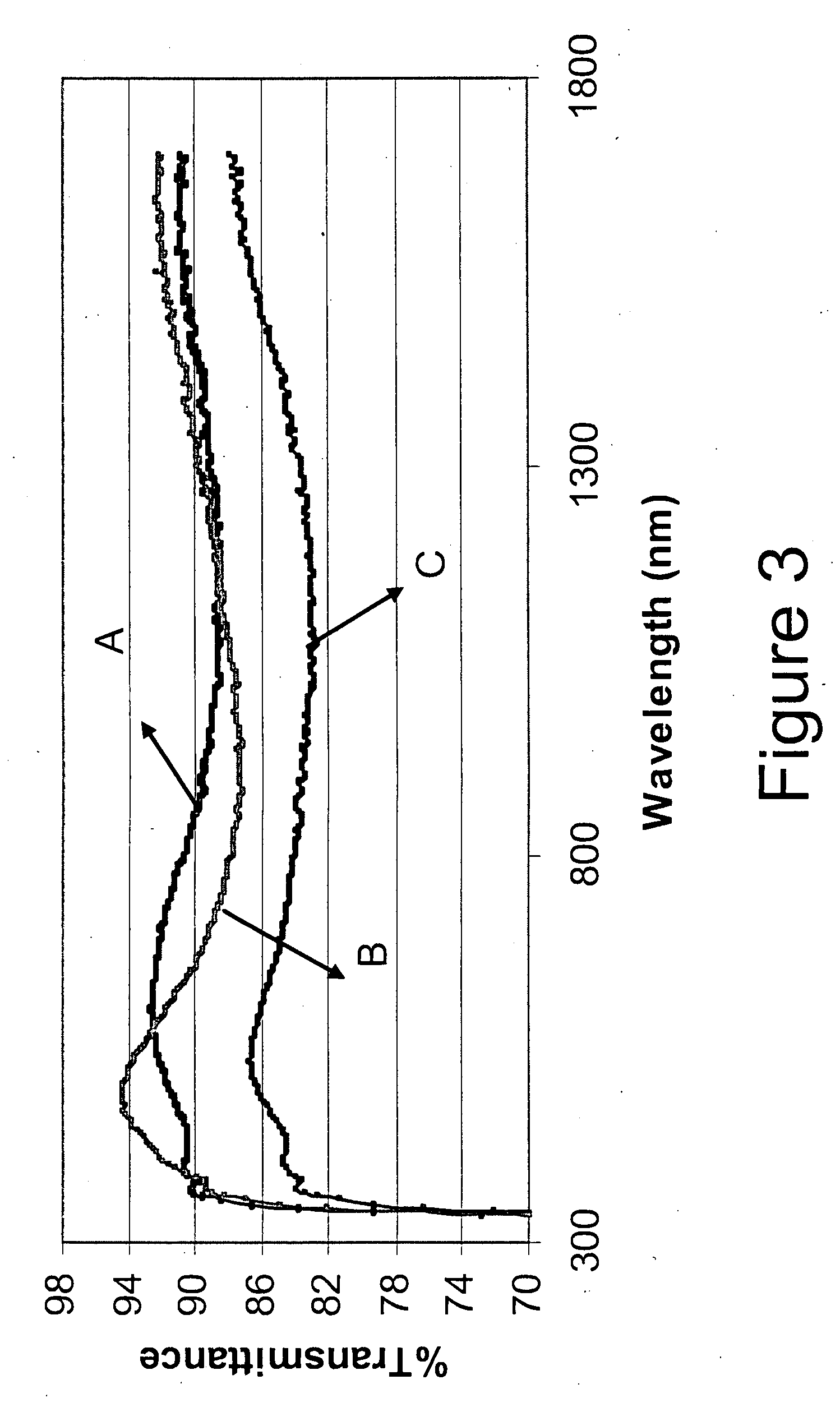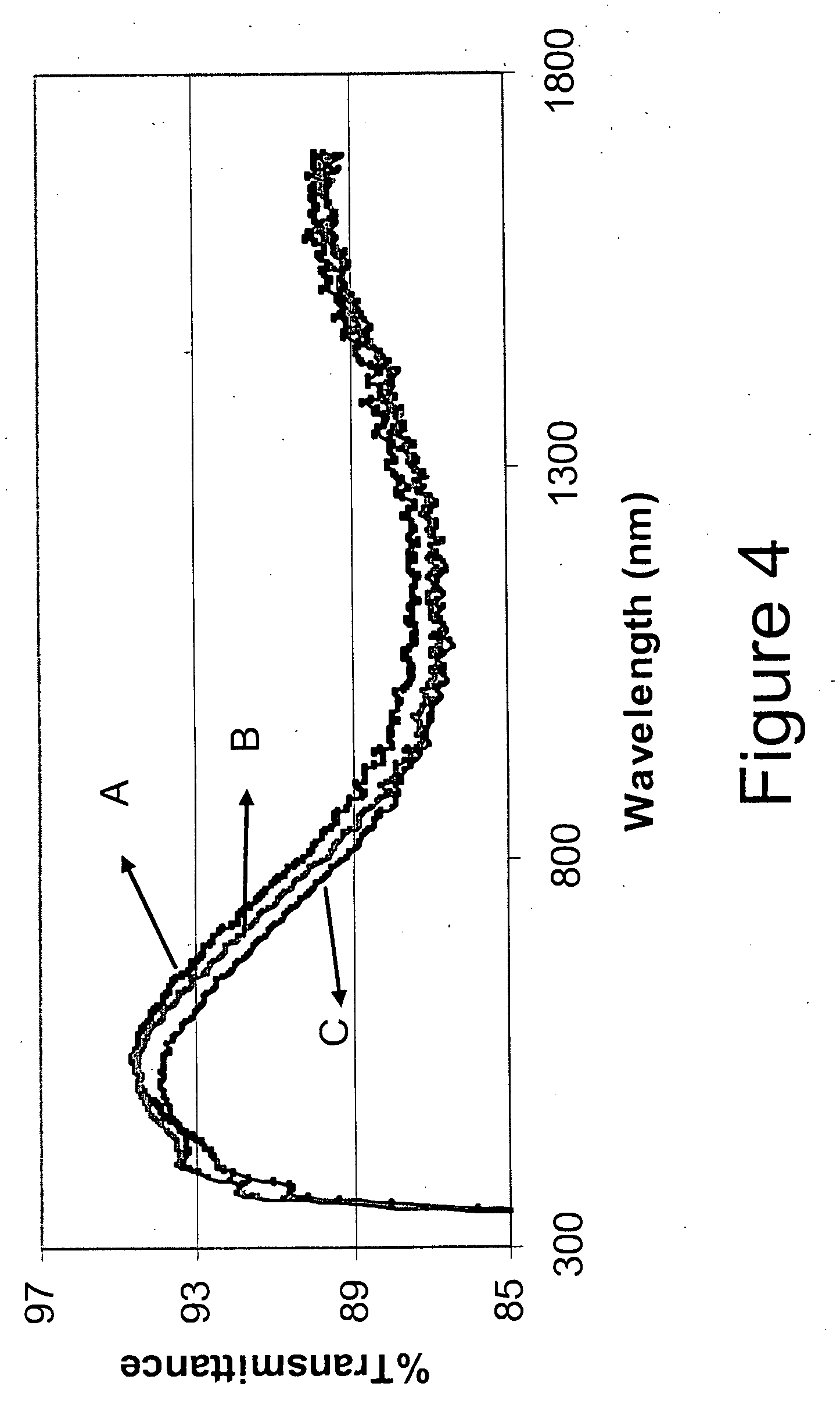Method of making a photovoltaic device with antireflective coating containing porous silica and resulting product
a photovoltaic device and anti-reflective technology, applied in the field of photovoltaic devices with anti-reflective coatings containing porous silica and resulting products, can solve the problems of less efficient solar cells, achieve reasonable durability for the overall ar coating, reduce the density and reduce the effect of the final layer 3a
- Summary
- Abstract
- Description
- Claims
- Application Information
AI Technical Summary
Benefits of technology
Problems solved by technology
Method used
Image
Examples
example # 1
EXAMPLE #1
[0051]The silica sol was prepared as follows. A polymeric component of silica was prepared by using 64% wt of n-propanol, 24% wt of Glycycloxylpropyltrimethoxysilane (Glymo), 7% wt of water and 5% wt of hydrochloric acid. These ingredients were used and mixed for 24 hrs. The coating solution was prepared by using 21% wt of polymeric solution, 7% wt colloidal silica in methyl ethyl ketone supplied by Nissan Chemicals Inc, and 72% wt n-propanol. This was stirred for 2 hrs to give silica sol. The silica coating was fabricated using spin coating method with 1000 rpm for 18 secs. The coating was cured at 130° C. for 1 minute, then heat treated in furnace at 625° C. for 3 and a half minutes. The optical spectra of this coating is given in FIG. 5 and increase in % transmission and power is shown in Table 3. It is noted that other silane(s) may be used instead of or in addition to Glymo.
example # 2
EXAMPLE #2
[0052]The 10% Wt of polyvinylpyrrolidone was mixed with 90% Wt of silica sol and stirred for 5 minutes. The coating method and heat treatment were the same as mentioned in the example #1. The optical spectra of this coating is given in FIG. 3 and increase in % transmission and power is shown in Table 3.
example # 3
EXAMPLE #3
[0053]The example #3 is the same as example #2 except the polyvinylpyrrolidone and silica sol were taken in 20:80 percent weight ratio respectively. The optical spectra of this coating is given in FIG. 3 and increase in % transmission and power is shown in Table 3.
PUM
| Property | Measurement | Unit |
|---|---|---|
| Temperature | aaaaa | aaaaa |
| Temperature | aaaaa | aaaaa |
| Temperature | aaaaa | aaaaa |
Abstract
Description
Claims
Application Information
 Login to View More
Login to View More - R&D
- Intellectual Property
- Life Sciences
- Materials
- Tech Scout
- Unparalleled Data Quality
- Higher Quality Content
- 60% Fewer Hallucinations
Browse by: Latest US Patents, China's latest patents, Technical Efficacy Thesaurus, Application Domain, Technology Topic, Popular Technical Reports.
© 2025 PatSnap. All rights reserved.Legal|Privacy policy|Modern Slavery Act Transparency Statement|Sitemap|About US| Contact US: help@patsnap.com



